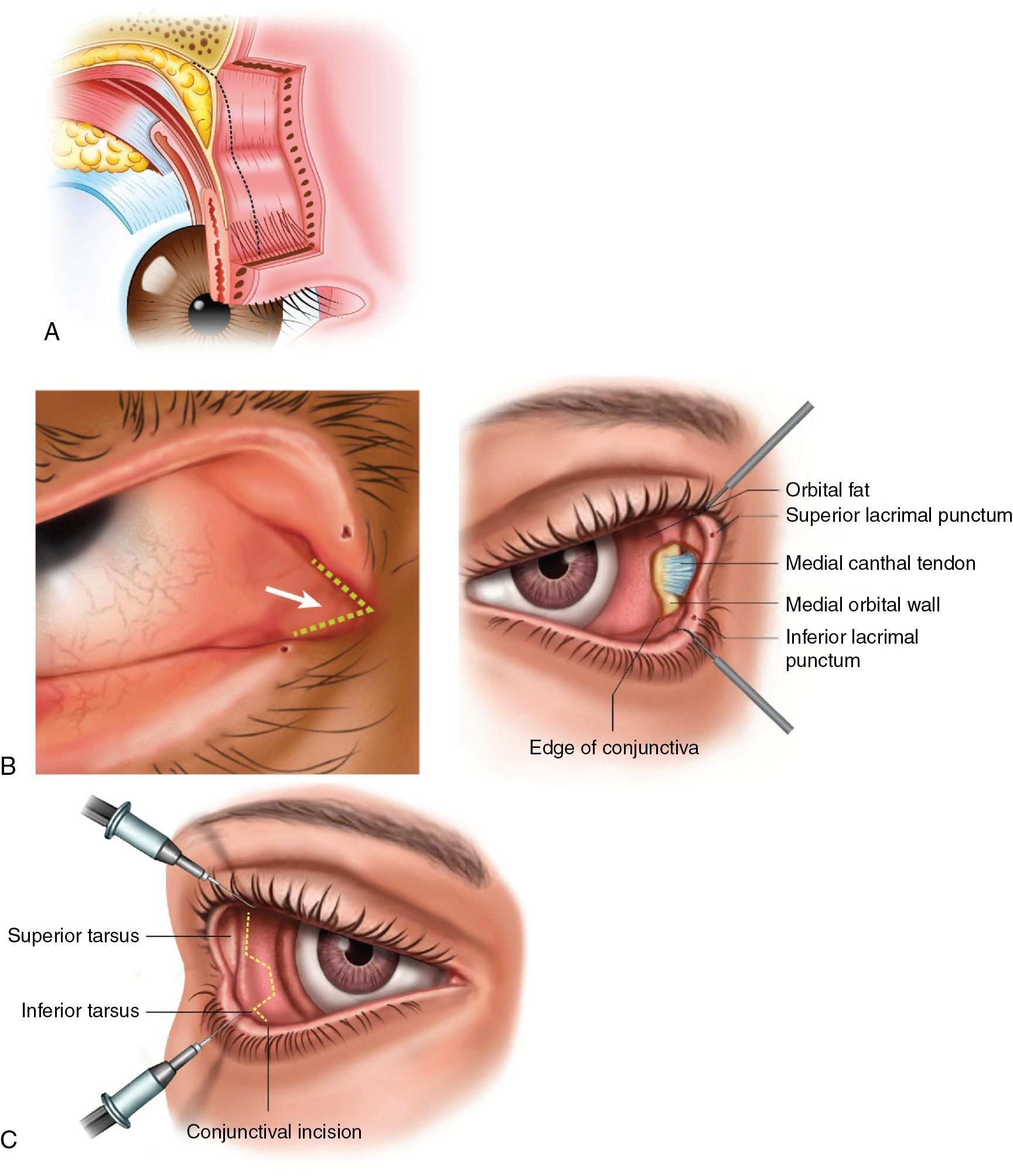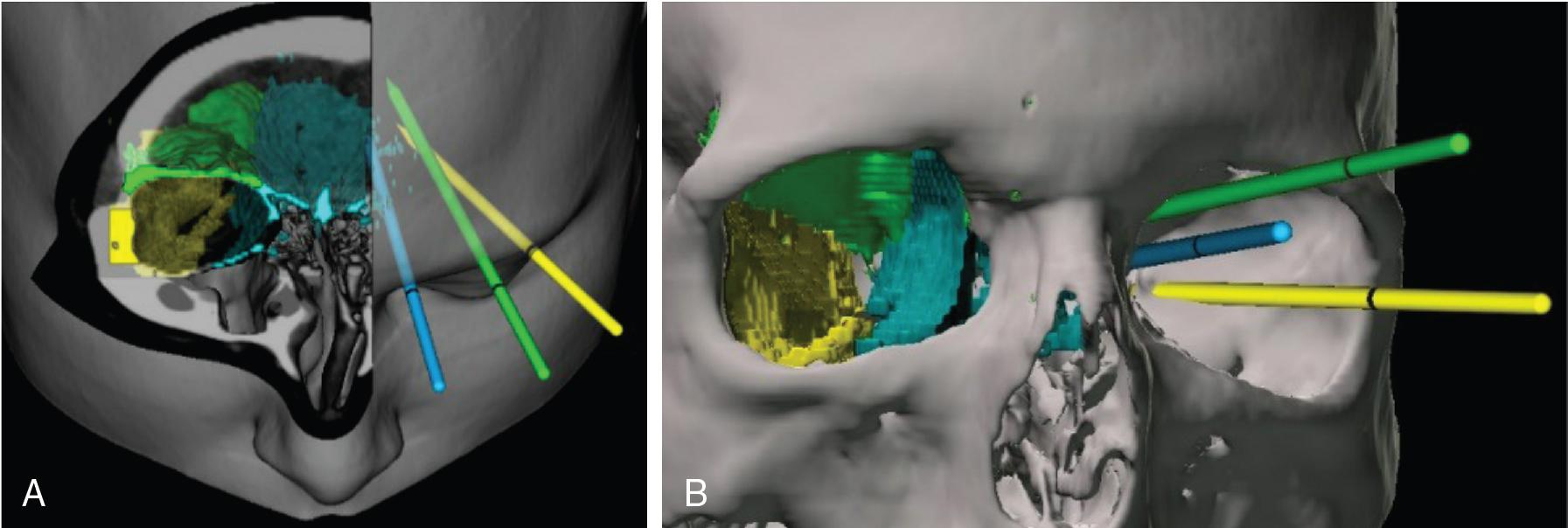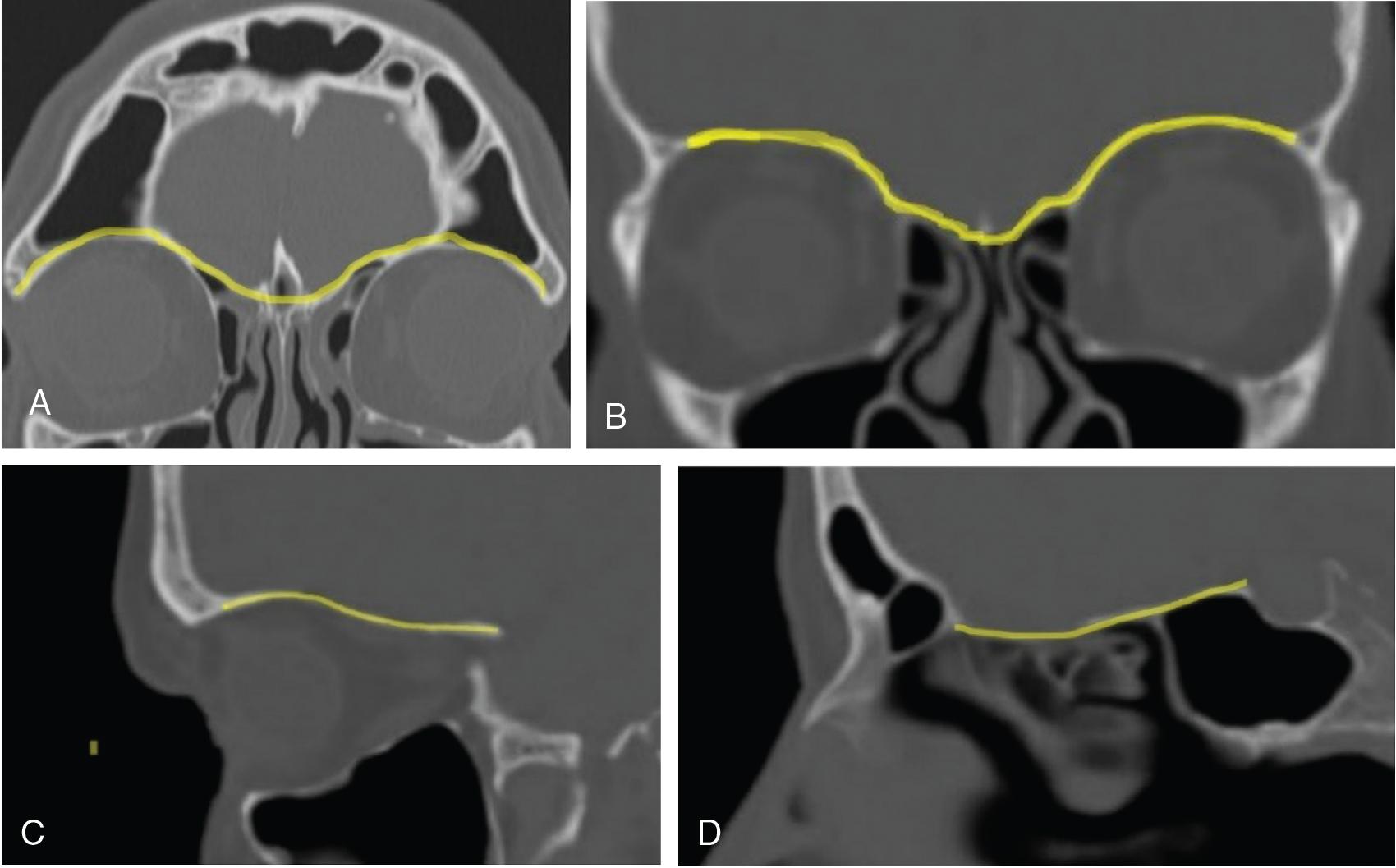Physical Address
304 North Cardinal St.
Dorchester Center, MA 02124
Surgical repair of cerebrospinal fluid (CSF) leaks can be considered broadly in two categories: open field (e.g., frontal craniotomy or subcranial) and endoscopic (e.g., endoscopic transnasal). Open approaches provide the advantage of wide surgical exposure that allows ease of instrumentation and ample access to reconstructive options such as a pericranial flap. The disadvantage of these approaches is the collateral damage created in accessing the surgical target, with attendant added neurovascular risks and potentially prolonged hospitalization. On the opposite end of the spectrum is the transnasal endoscopic approach . This procedure carries the advantages of minimally disruptive surgery, excellent lighting and magnification, and the ability of the entire surgical team to follow the operation on monitors. In addition, there are often excellent reconstructive options available such as the septal flap, which can be pedicled on the posterior septal or ethmoid arteries depending on the location of the leak. These procedures are highly effective as described within this book for access to leaks involving the posterior and central region of the interorbital anterior cranial fossa (ACF) and are our preferred techniques for most initial repairs of defects in that region.
Another set of options that has more recently become available are the transorbital approaches to the ACF and middle cranial fossa (MCF). , Using minimally disruptive, coplanar approaches with transorbital neuroendoscopic surgery (TONES), we are now able to reach structures deep within the orbit and brain with minimal retraction of neurovascular structures, enabling patients to achieve a rapid return to their accustomed lives with accelerated recovery and reduced health care expenses ( Figs. 36.1 to 36.3 ).



Our interest in endoscopic transorbital skull base surgery arose initially to overcome some of the challenges of transnasal endoscopic approaches. Among these are (1) less than 20% of the ACF is composed of the apex of the sinonasal cavity (the interorbital ACF), with 80% of the ACF consisting of the orbital roof (the supraorbital ACF) ; (2) the funnel-shaped surgical approach to the interorbital skull base becomes progressively narrower as the target is reached, leading to collisions between the endoscope and instruments, confined working space, and run-down of blood from instruments onto the lens of the endoscope; and (3) there is a frequent need for angled endoscopy and cross-planar technique to visualize and instrument the surgical target. In addition, transnasal endoscopic approaches necessitate placement of the endoscope and instruments in a similar vector with minimal offset angle; therefore, the instrument frequently obscures visualization of the surgical target. As a result, contact of the instrument with the surgical target is inferred by haptic feedback rather than direct visualization, and three-dimensional viewing is lost.
Through cadaveric dissections and clinical research, we found that transorbital endoscopic techniques allow excellent surgical access, providing complementary approaches to transnasal portals that overcome some of the limitations of transnasal endoscopic procedures. These procedures are highly effective when used alone or in multiportal techniques with transnasal and other approaches (e.g., paramaxillary, transcranial) to improve working space, facilitate coplanar surgery, and permit pseudo-parallax viewing of target manipulation with diminished reliance on haptic feedback through wide offset between the endoscope and instrument(s). We found that these approaches allow access to the entire ACF, including the interorbital skull base and frontal sinus, as well as significant components of the MCF for a wide variety of adult and pediatric indications, including resection of benign and malignant tumors and vascular and lymphatic malformations; management of CSF leaks and tension pneumocephalus; repair of trauma of the orbit, frontal sinus, and frontal bone; management of advanced mucoceles of the orbit, frontal sinus, and ACF; orbital and optic nerve decompression; foreign body removal; and drainage of abscesses of the orbit, frontal sinus, and brain. , This chapter focuses on the use of transorbital endoscopic pathways in the management of ACF CSF leaks.
For patients with CSF leaks limited to the interorbital ACF within anatomic confines that can be comfortably reached with transnasal technique, we use a transnasal approach combined with a nasal septal flap. Depending on the size and location of the leak, the flap can be used with or without cartilage and pedicled on the posterior septal, posterior ethmoid, or anterior ethmoid artery to seal the defect. We support the construct with fibrin glue and a resorbable sponge to prevent displacement of the flap away from the skull base during healing.
When the origin of the leak involves the supraorbital ACF or the interorbital ACF in the posterior frontal sinus, we use a transorbital approach alone or in multiportal combination with a transnasal approach (particularly if a septal flap is incorporated in the repair). If the patient has had prior failed attempts at repair either through open craniotomy or transnasal endoscopy, there often remains significant scarring in these surgical pathways, and standard options for reconstructive flaps may no longer be available. In these situations, we may use a transorbital approach even for skull base defects limited to the interorbital ACF to avoid operating through scar tissue while allowing intracranial placement of the reconstructive material over an expanded area sandwiched between the brain and skull base.
We previously described our techniques of transorbital repair of CSF leak as well as our initial clinical experience in 2010, and our current techniques remain relatively unchanged. In that series, 50% of the cases were revision procedures performed after up to five prior craniotomies or transnasal endoscopic attempts at repair. All procedures lead to successful resolution of the leak without deleterious orbital sequelae.
The primary contraindications to transorbital endoscopic surgery are found in trauma patients: a ruptured globe or hyphema (blood in the anterior chamber of the eye). In addition, caution should be taken in patients who have had intraocular surgery within the past 6 months, orbital infection, severe orbital inflammation or congestion, diminished corneal sensation from previous LASIK surgery, or other orbital pathology that creates a mass effect or alters anatomy in a manner that could obstruct endoscopic access. Glaucoma and dry eye do not appear to be contraindications to transorbital pathways, though increased care should be given to lubrication of the ocular surface during and after surgery. Consultation with an ophthalmologist before and possibly after undertaking transorbital surgery is recommended for patients with these ophthalmologic conditions.
The first task in repair of the leak is accurate identification of the source. For most cases, this can be identified based on history and basic imaging such as a fine-cut computed tomography (CT) scan. If this is inadequate to identify the source of the CSF leak, a magnetic resonance image should be obtained. If the source of a confirmed β2 transferrin–positive leak is still uncertain, a CT cisternogram is obtained, or an endoscopic fluorescein study is performed at the beginning of the procedure by intrathecal injection of fluorescein.
After the source of the leak is identified, conservative (nonsurgical) treatment, including observation or lumbar drainage, is used if the cause was a recent trauma. If conservative therapy fails or is contraindicated, surgery is contemplated.
Choice of a surgical approach is then undertaken. As noted earlier, for previously unoperated leaks in the interorbital skull base, a transnasal approach is typically undertaken. For revision cases and cases with significant supraorbital ACF involvement, a transorbital approach is chosen. The transorbital endoscopic approaches used most often for this application are the superior eyelid crease (SLC), precaruncular (PC), and lateral retrocanthal (LRC) approaches (see Fig. 36.1 ). For the purposes of ACF CSF leak repair, the SLC and PC approaches are most commonly used. The LRC approach is used for access to the MCF, infratemporal fossa, temporal lobe, lateral cavernous sinus, and orbital apex and is a good approach for the unusual CSF leaks in the lateral recess of the sphenoid sinus. The inferior transconjunctival (ITC) approach is primarily used to gain access to the MCF, foramen rotundum, pterygopalatine fossa, sella, and parasellar regions in areas that are less commonly a source of CSF leak. As such, the ITC approach is not discussed here but is described in depth elsewhere. ,
As noted earlier, ACF CSF leaks can be categorized as either supraorbital or interorbital or both as is often the case with frontal sinus fractures. The SLC approach provides access to the entire supraorbital ACF, as well as the majority of the interorbital ACF. However, for instrumentation of the interorbital ACF, the PC approach provides the most direct surgical pathway and may be more efficacious. This is due to the convex superior orbital surface that drops inferiorly at the medial aspect, which, depending on the site of pathology, may make the angle of instrumentation suboptimal from the SLC approach ( Fig. 36.4 ).

The PC approach simplifies instrumentation and allows deeper exploration if the pathology crosses over to the contralateral ACF. It can be used either as a sole viewing and working port or as a second port for viewing or working through the contralateral side or through a transnasal pathway. Although this is not generally needed for typical CSF leak repair, it may be useful in the repair of anterior interorbital defects, particularly those adjacent to the crista galli. In the latter situation, we perform bilateral PC approaches and pass the material in through one side above the skull base, around the crista galli and across the ACF defect, and out the other side. This provides a large area of bone support under the graft material, as well as an extensive surface area for bonding of the graft to the adjacent tissue, which can be challenging to perform via a transnasal approach.
Become a Clinical Tree membership for Full access and enjoy Unlimited articles
If you are a member. Log in here